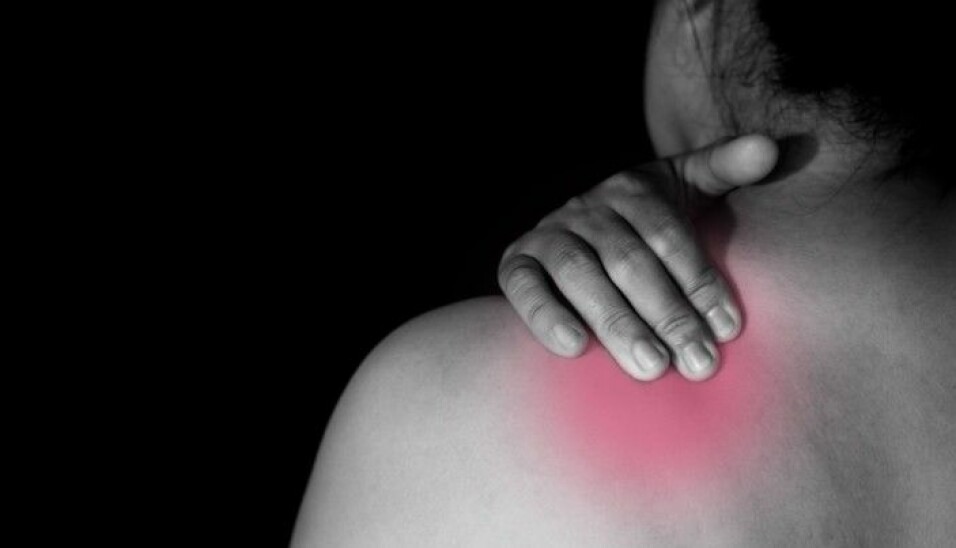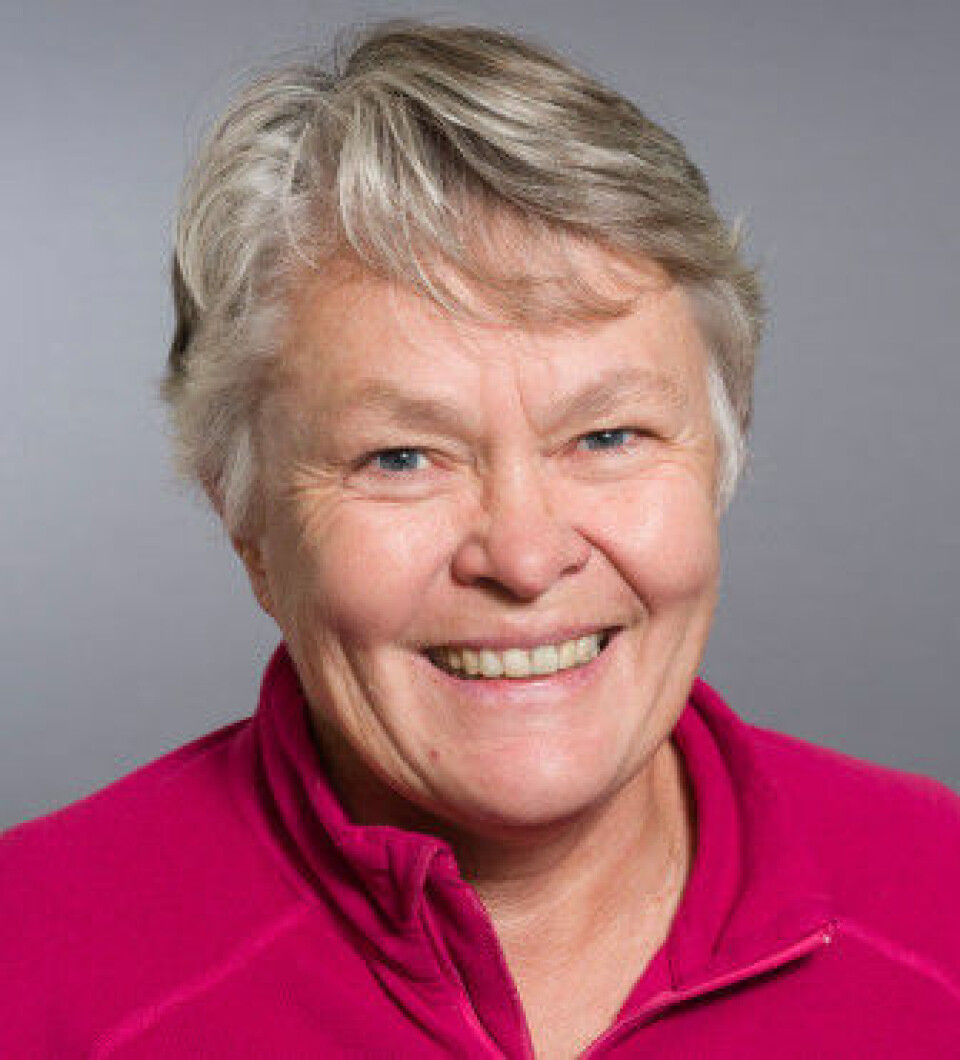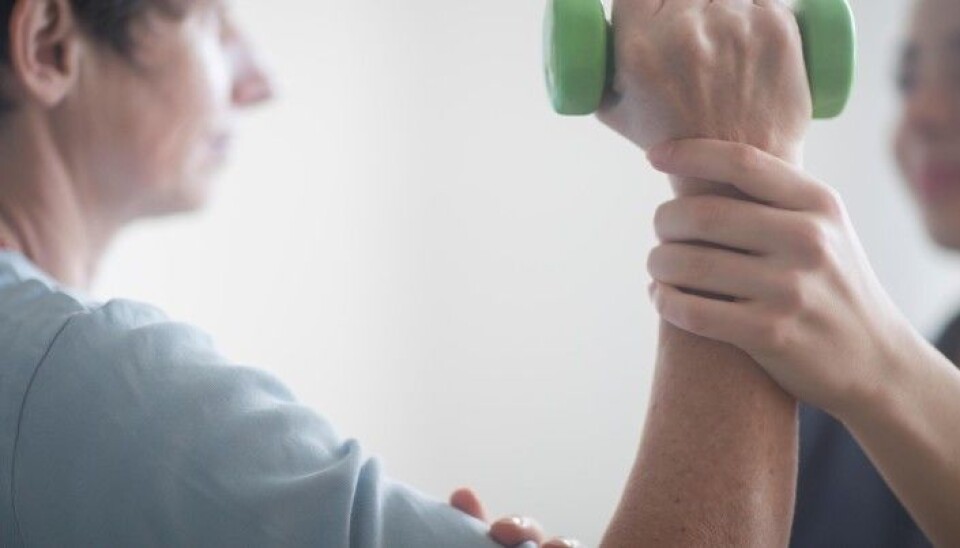
No solid evidence to support that trigger points exist, says sports professor
Research is lacking on the effectiveness of trigger point therapy, according to sports professor Kari Bø. Some people refer to trigger points as “muscle knots”, but what does that mean? Our muscles certainly don’t form knots.
The term “trigger point” was introduced in the 1980s. It is a popular term for special points on the skin that feel sore and irritated when pressed.
Today, both chiropractors and physiotherapists offer trigger point therapy for muscle pain.
The idea behind the treatment is to help tense muscles to relax by pressing or inserting needles into the trigger points. But does the treatment actually work?
We don't have solid documentation to confirm this, according to Kari Bø. She is a professor at the Norwegian School of Sport Sciences.
“The treatment certainly hasn’t been thoroughly researched, and there’s a great deal of controversy about trigger points. Many physiotherapists believe that trigger points exist, but it’s not clear that they do,” she says.
Studies lack rigour
“There is little consistency in what different therapists are able to identify in patients. If two therapists don’t know what point they are looking for and they examine the same patient, they often find identify different trigger points,” says Bø.
Bø points to an overview article in the journal Rheumatology, which concluded that the theoretical basis for trigger points was not good enough.
One of the studies in the review did identify some changes in patients' muscles, according to Bø. In this case, the researchers had used ultrasound in their study of nine patients.
“But the review article concluded by stating that the studies were not methodically rigorous enough, and that they don’t provide a sufficient basis to confirm the existence of trigger points that can be therapeutically treated to help patients,” Bø says.
The British Chartered Society of Physiotherapy also cites trigger points as a controversial issue.
So far, researchers have not been able to detect trigger points in muscles, but ultrasound is the most promising search tool, according to another review from 2018. Here, researchers claim that trigger points can be linked to migraine and tension headaches.
But what if the trigger point treatment has effects that aren’t captured by research summaries? Can positive short-term effects go unnoticed?
“Short-term effects could certainly be studied better,” says Bø.
“Most of the studies in the research summaries do look specifically at short-term effects after a series of treatments. But there’s generally a lack of follow-up studies,” says Bø.
She finds that many of the studies are not rigorous enough. For example, many of them are designed so that the therapist knows which patients are real patients and which are part of the control group.
And the measurement methods are also inadequate, according to Bø.
“We simply don't know enough yet, and it’s terrific that we’re starting to ask critical questions and initiate research projects on it,” she says.
She emphasizes that a lot of good research exists on physiotherapy treatments and what works.
"Almost all the studies show that different forms of exercise are effective, and the core of physical therapy is training and helping assign the proper exercises," says Bø.
Patients say it helps
For many years, Roar Robinson was a physical therapist for the Norwegian national men’s football team. He now owns Hans & Olaf Physiotherapy in Oslo and teaches the master's degree program in manual therapy at the University of Bergen.
Robinson is familiar with the discussion about the existence of trigger points and knows that there is a lack of good evidence that the treatment – which he calls soft tissue massage – helps.
This kind of massage is just one part of the treatment options that physiotherapists may offer.
Help with exercise, injury prevention and rehabilitation form the core of physiotherapy. Physiotherapists work to get muscles moving normally, according to Robinson. And when they achieve that, they likely see that the muscles regain normal tension as well.
Robinson finds that his patients experience benefits from this massage, in addition to training exercises and other treatment measures.
“We don't have any good documentation that it works, but we often see trigger points in relation to the muscle tension the patient tells us about. Then we find the trigger points and treat them, for example with pressure or needles in the muscles.
The idea is that the trigger point can be released by treating and activating it.
"You notice that the muscle reacts, like a jerk with subsequent relaxation in the muscles, and then the tension normalizes", says Robinson.
Psychological effect
When patients report that they experience an improvement, it might happen on many levels. One way is through the patient-therapist relationship, believes Robinson.
“We know about the placebo effect, and we know that a lot of things can work at the same time. It may be positive just to be touched.
“Explanations aren’t limited to the purely physiological. Like everything else in therapy, there’s an interaction between the psyche and the soma. We have problems documenting local changes in muscles in the muscle treatment we provide, but we see that it’s helping patients,” he says.
He also experienced this when working with top athletes.

“Athletes often receive a recovery massage to help them recover quickly after a competition. But there’s no clear consensus that this works, and no research to confirm that you have a better recovery from the massage,” says Robinson.
“And yet, the experience among therapists and the feedback from athletes indicate that they recover better when they get a massage.”
Like Bø, Robinson emphasizes the lack of research, and that that which has been research still does not give clear answers.
But he believes that several aspects of the massage can affect athletes’ recovery.
“The massage offers athletes a little period where they’re taken care of, can relax and not think about much. The effect may be as much on the mental plane as on the physical. But of course we also try to benefit them physiologically as well,” he says.
“The treatment can work on several levels,” says Robinson.
A muscle can’t form a knot
We probably all know that muscles can feel stiff and sore.
Muscles that are often – or always – tighter than usual will eventually lead to irritation in the muscles, becoming tender and sore. You may have used the phrase “muscle knot” if you have experienced it.
But pain is also experienced differently from person to person.
Robinson says it's common for patients to say they have muscle knots.
Then he tries to explain that a muscle can’t make a knot. But at the same time, he uses the patients' description to interpret what they need help with.
“There may be increased tension in parts of the muscle or fibres that make up the muscle. If you feel the muscle, you may notice that there may be a slightly different texture in the tissue. Parts of the muscle and some muscle fibres have increased resistance, and this is what we interpret as increased tension.
"These are the points, or sore parts of the muscle, that the patient refers to as muscle knots," Robinson says.
Describes a feeling in the body
“‘Muscle knot’ is a way of translating what we’re feeling in our bodies into the words we have. We try to understand it ourselves and explain it to others by giving it a name,” says Nina Køpke Vøllestad. She is a professor at the Department of Interdisciplinary Health Sciences at the University of Oslo.
Vøllestad is researching musculoskeletal disorders, and what kind of help people who have such disorders receive in their primary health care. She is also studying what people say when they describe physical experiences in the body.
“A subjective feeling may well reflect an underlying physiological change,” says Vøllestad.

“For many years the prevailing belief was that long-term muscle pain was linked to the accumulation of lactic acid. This was a natural explanation, but we have little evidence of that model being correct."
According to Vøllestad, we don’t have knowledge that shows a very specific biological change in a muscle that is hard and tender.
“Research shows that prolonged, but also low, muscle activity is related to muscular ailments, but we still know very little about how this results in troublesome conditions,” says Vøllestad.
But even if you can't measure how sore and hard a muscle is, maybe you think you can feel it, and your physical therapist will too?
How hard is a tight muscle?
Vøllestad thinks a lot of people can feel someone’s muscle and evaluate whether it’s tight or not.
But how hard is too tense for that individual?
“I’ve been told that I have very tight muscles, and on that basis physiotherapists have said, ‘That must hurt!’ But it didn’t, that’s just the way my muscles are. So there’s probably a lot of variation in people’s muscles and what feels like tight knots,” says Vøllestad.
According to Bø, different therapists may also feel different things when they work on the same muscle.
In 2018, Bø participated in an experiment where she and 124 muscle, orthopaedic and pelvic floor specialists investigated this. They used a standardized device with resistance in an effort to recreate the sense of feeling a muscle.
But when the specialists gave their assessments, there was little consistency among them. The individual therapists simply experienced the resistance differently,” says Bø.
Different experiences and designations
Robinson says that therapists often have different experiences and expectations, and we don’t have data that show that they’re feeling exactly the same thing.
But he believes the lack of consistency may be due to more than what the therapists are feeling in a muscle.
They simply have some challenges around word usage – for example, how they describe muscle tension, he says.
“I’m a manual therapist in what’s called psychomotor physiotherapy. In this field we have an even greater vocabulary about muscle tension. But different designations can contribute to not being completely unified in how we evaluate muscles. We use different words to describe what we experience,” Robinson says.

“But I also believe that the differences are partly due to skills. Some therapists have worked a lot on musculature and are good at it. And not everyone has the same expertise,” he says.
Possible to make the muscles relax
So there is disagreement about whether trigger points even exist and whether it helps to press on them. Maybe you’ve felt how trigger point therapy has loosened your tense muscles, and maybe the therapist also thinks it has.
“It's possible to stretch a muscle and make it relax more,” says Bø.
“But to say that the tension has improved over the course of the hour, and that it’s because of the treatment you received – there’s no basis for saying that without measuring the tension before and after, such as with a method that measures electrical activity in the muscle,” she says.
Bø emphasizes that she does not doubt that patients may be better off with physical therapy.
But perhaps it’s from the training and exercises in the treatment and not from being treated with trigger point massage, she says.
Physiotherapists help patients in several ways.
“Most professionals try to provide a good exercise plan for the patients and urge them to change their lifestyle, quit smoking and move more. Massage as part of treatment may well provide good relaxation and make the patient feel better and for some also reduce pain, but we need more research,” says Bø.
Move your body
And if you feel like you have a muscle knot, you might be right – in a way.
Although the experts chuckle a bit at the phrase, it still describes the issue in a way that makes sense to both you and the therapists.
Therapists are very dependent on how the patient sees the problem, according to Vøllestad. At the same time, she believes this presents challenges.
“Interpreting the words and what they might mean requires language skills and cultural understanding on the part of the therapist. What words do people from Pakistan, for instance, say about muscle pain or muscle knots, as compared to what people say in Norway or Somalia?” she wonders.
What does Robinson recommend if you feel like you have a muscle knot right now?
“Move it and vary your activities in everyday life. Getting some exercise can help. Using the muscle and getting it a little tired can make it – and you – feel more relaxed afterwards."
Translated by: Ingrid P. Nuse
References:
Quintner et al: A critical evaluation of the trigger point phenomenon. Rheumatology, March 2015.
———
Read the Norwegian version of this article on forskning.no
































